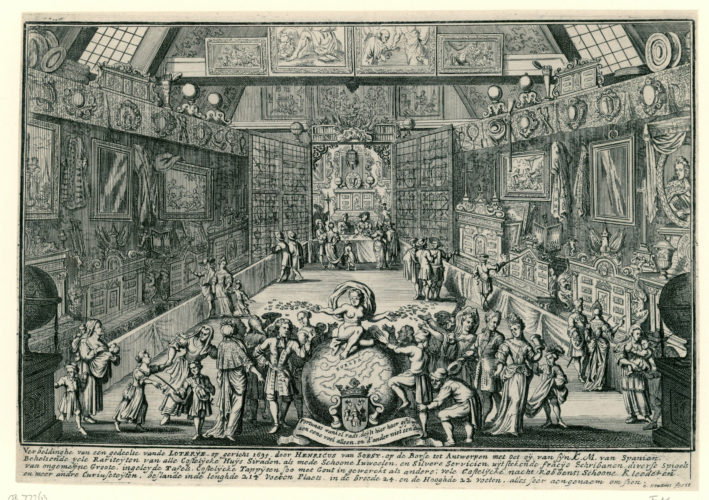This Dutch etching vividly depicts the marketplace of chance that had become an expanding space of knowing, with its own established iconography, by the late seventeenth century in Europe. Henry van Soest was a key figure in Antwerp’s commercial circles and international trade networks. Originally a cabinet-maker and a dealer in luxury textiles, he became the leading trader in furniture and marquetry (intricate design as veneer to wood surfaces). He also became a great lender of funds and a politically supported speculator, and was allowed by patent to hold a lottery in 1694. His workshop in the Antwerp Stock Exchange was extended in 1694 to include a room to exhibit his curious and wonderful collection. An engraving of this room is what you see in this advertisement for his famous lottery, bringing together the ideas, spaces and practices of trade and those of accidental knowledge. Merchants were, famously, purveyors of risk, and lotteries focused the way in which uncertainty became a form of merchandise. Frontstage centre, you see a naked Lady Fortune, blindfolded, perched on a globe, distributing lottery tickets to a socially mixed, and eager, crowd
Click here to see another depiction of a lottery in the Playhouse section.











